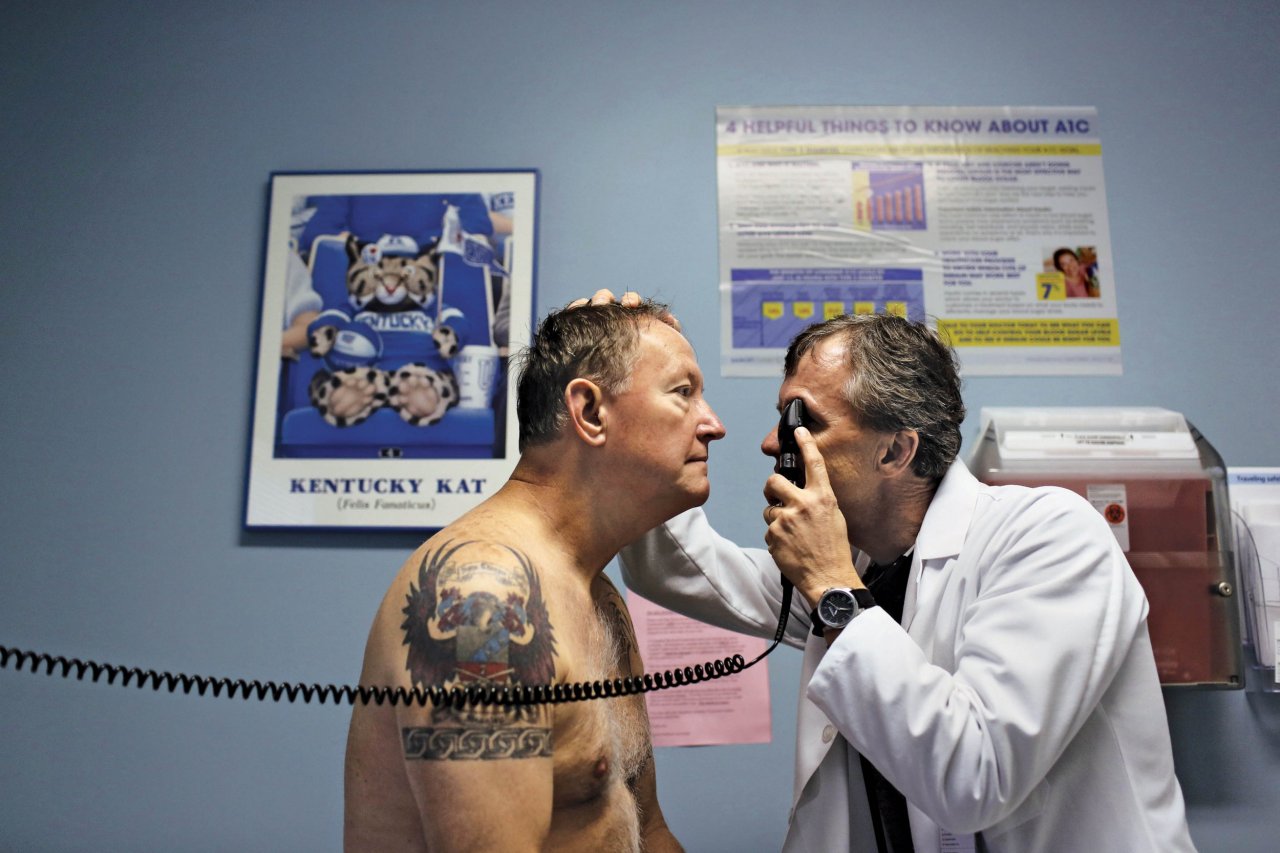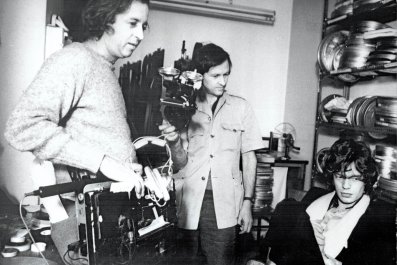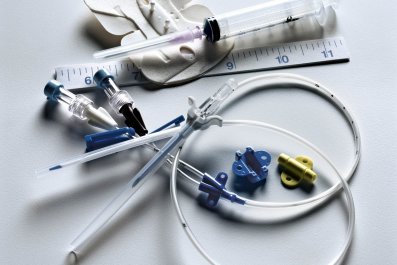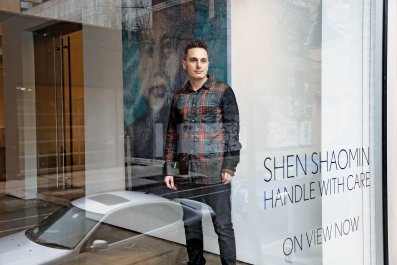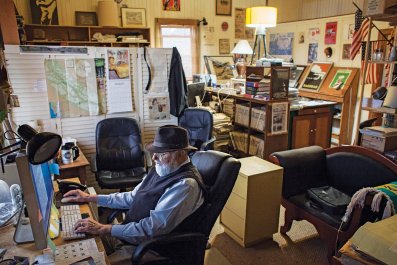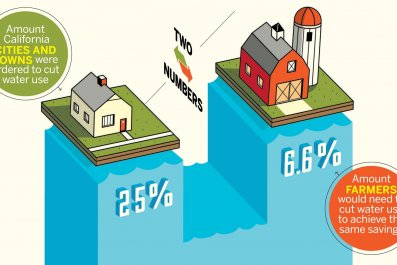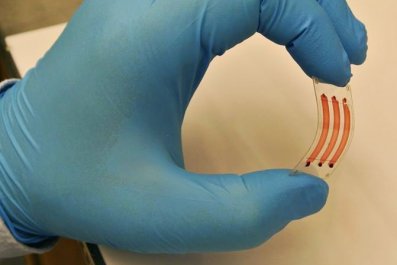Going to a doctor's office and waiting in a fluorescent-bathed room full of gross, sick people has been a common form of torture ever since doctors ended house calls. But technology can fix that, just as it has fixed other age-old practices, like getting a taxi by standing perilously close to traffic and waving.
As a sign of what's coming, a handheld medicine startup called Spruce just got $15 million in funding. Spruce is a step toward allowing you to "see" a doctor through your smartphone. Though one of the most interesting things about Spruce is that it questions why, in many cases, you need to see a doctor. Instead, why not give the doctor all your relevant information so she can review it and reply when she can?
Spruce is starting with dermatology. Once you download the app, it offers a choice of conditions: acne, eczema, bug bite and so on. Based on the condition, it asks a series of diagnostic questions ("How would you describe your skin? Normal? Oily? Dry?"). Then it tells you what kinds of pictures to take of your condition. Finally, you can pick a participating doctor to send everything to, or just choose "first available." You're promised a response within 24 hours, including, if needed, a prescription sent to your drugstore and instructions on how to care for your condition. The cost is $40, not much more than the co-pay for many specialist visits, which means using Spruce can make sense even if it's not covered by insurance.
Spruce launched an app in September to treat only acne, then it released an expanded version for more conditions in late March. The big surprise, says CEO Ray Bradford, has been how much both patients and doctors appreciate the unrushed nature of asynchronous medicine. Patients can take their time answering questions without feeling as if the doctor is nervously tapping her foot as she tries to race though a packed schedule. Doctors, who for now take Spruce cases mostly as after-hours supplementary work, can make their diagnoses with their feet up on the couch, sipping a good Bordeaux. (Hopefully, they're not reviewing my case after the second or third glass.)
Dermatology is only the beginning, Bradford tells me. "We're excited about the set of [medical conditions] we could apply Spruce to, but we can't do it all at once," he says. "We're being disciplined, condition by condition."
Spruce is one startup in a bubbling stew of activity around handheld medicine. You can't even call it "telemedicine" anymore. That term has been around awhile and usually means real-time, Skype-like video interaction. The new breed is rethinking medicine based on smartphones, mobility and cloud-based artificial intelligence (AI).
Handheld medicine companies Doctor on Demand and HealthTap have referred to themselves as the Uber of doctors, and they've each raised more than $20 million in funding. Other apps can take blood pressure and electrocardiogram readings and send them to a cardiologist. Apps for eye tests are becoming as accurate as those steam-punkish contraptions ophthalmologists push up to your face—it probably won't take Warby Parker long to offer a prescription eye exam on your phone. Meanwhile, seeing the potential savings and convenience, state legislatures are writing bills that would make insurance companies pay for handheld medicine.
Down the road, AI might be the real difference maker. IBM's Watson technology, installed in high-end health centers such as the Cleveland Clinic, can ask a patient questions and arrive at an accurate diagnosis. A Watson computer can be loaded with far more medical information than any doctor could ever keep in his noggin, so it can be better than a doctor when it comes to recognizing rare conditions. Watson may be complex and expensive now, but like all technology, it will get better and cheaper. Soon, a Watson-like doctor app will be able to give you a first-pass diagnosis without ever involving a human doctor. An AI doc will have some trust issues to get past, but so did ATMs when they first came out.
All kinds of trends are coming together here. Of course, the technology makes it possible, from the high-res cameras in phones to the always available cloud. A young generation that grew up connected will latch on first, but a massive wave of tech-savvy baby boomers are getting old, needing more health care and having more difficulty leaving the house to get it. At the same time, projections say the U.S. will have a shortage of 52,000 physicians in the next 10 years. Spruce's Bradford says that one reason he started with dermatology is that the average wait in the U.S. to see a dermatologist is 29 days.
While a Spruce "treatment" now costs $40, it's easy to see how competition and AI—or for that matter sending asynchronous patient queries to less-costly doctors in India or Thailand—could drive prices lower. If a typical doctor's office visit for a rash or the flu or a kid's ear infection ends up being something you can do on your phone at midnight for $20, why bother with your insurance for that level of care? Pay out of pocket, and spend your health insurance money on more catastrophic coverage.
Who wouldn't want this? For patients, going to a doctor's office when you're sick is like going to a party full of strangers when you're lonely. It might help, but it's just as likely to make you feel worse. And good doctors will be able to waste less time on trivial conditions and whiny hypochondriacs and focus on patients who really need hands-on attention.
Then, for most people, the doctor's office will become a relic of a time when health care meant that too few doctors had to see too many patients face to face. Unfortunately, though, the handheld dentist is nowhere on the horizon.



